Wheel bearings can be deceiving since they can often only be heard when the wheel is spinning in excess of 30mph; they produce a howling, growning, sometimes grinding sounds that increases frequency with speed.
The problem: You drive around and around and try to figure which bearing it actually is, and thinking to yourself if you should change both bearings or just the one bad one. When you pull the car into the garage and spin the wheel however you can not tell which wheel bearing is bad.
The solution: The trick to determining which wheel bearing is bad is by holding the spring with your index and thumb fingers and spinning the wheel with the other hand. For a wheel bearing that is bad you will feel the “none-smooth” vibrations in the spring. Believe me, you will be able to feel any roughness in the bearing, it doesn’t take sensitive hands or years of practice. The spring is particularly good in absorbing vibrations from the bearing which you will EASILY feel when turning your wheel by hand.
A good new bearing will cause absolutely no vibration in the spring. A bad bearing you will feel, and the best part of this trick is that you will also be able to tell when a bearing is going bad BEFORE it makes any noticeable sounds. In my case I went to change one wheel bearing but noticed roughness in the other one which prompted me to change both.
For even more precise results its best to remove the wheel (4 bolts) and caliper carrier (two 19mm bolts) as to not have any interference from the brake pads against the rotor.
This gentlemen explains the concept:
To change a front wheel bearing on an E30 is a relatively simple job that I often see over complicated in other DIY’s. Some other DIY’s talk about removing the caliper from the carrier, removing the ABS sensor, puting the wheel back on to torque the shaft nut, etc, none of which is required.
All you need to do this job is:
A couple flat screw drivers, one smaller one larger
Rubber mallet
19mm, 17mm, and 36mm Socket
Hex socket socket for brake disk retaining screw
10mm socket
2 or 3 jaw puller
For particularly difficult to remove inner races you will need:
Dremel with cut off wheel
Chisel
First jack the car up (remember jack stands), and remove the wheel(s).
Proceed to remove the caliper carrier by removing two 19mm bolts from behind.
These are the two bolts I am talking about:
This will allow you to remove the whole caliper and carrier assembly pictured below as one piece.
Proceed to hang the caliper with a rope, bungee, zip ties or any other method from the spring as not to put tension on the brake line.
Remove the dust cap using a chisel or screw drivers. The cap can be reused, all you want to do is get the edge of the screw driver under the lip and go around wedging it out little by little, eventually it will just pop off.
Remove the brake disk by removing the retaining screw:
Proceed to unbend the the lock nut tab and then undo the 36mm bolt. Its relatively easy to do this unbending with a screw drive and a hammer. Remember the nut is screwing/unscrewing onto a rigid shaft and not a part of the bearing, therefore you can use a breaker bar or an impact wrench. You do not need to put the wheel back on or lower the car back down as the nut has nothing to do with the bearing.
Use a 2 or 3 jaw puller to pull off the hub assembly.
If your lucky your hub will come off complete. 50% chance it will not and the inner race will remain on the shaft:
The easy way:
The harder way:
BEFORE DOING THE BELOW STEPS: confirm that you can not pull the inner race off with some pliers (do not scratch the shaft), and cannot get a hook behind the bearing with your jaw puller. 8/10 times the below is not required.
The sure-fire way to remove a really stuck inner race is to make a cut to relieve the pressure. Use a dremel with a cut off wheel to cut most but NOT all the way through the inner race. Make sure not to go to far and nick the shaft. Finish it off with a chisel.
*The rear dust shield only needs to be replaced if it is damaged or heavily rusted. To do this, use the old bearing with the inner races removed as a drift with the 36mm socket:
For installation of the new hub
Easy way:
E30 Front wheel bearing hub installation tool 312120 Factory level tool!
The harder way:
Use the 36mm socket and a rubber mallet to push the new hub back on. If you use a metal hammer as pictured below, do little soft taps.
**NEVER hammer on the hub face, only the socket which is pushing on the inner and outer races.
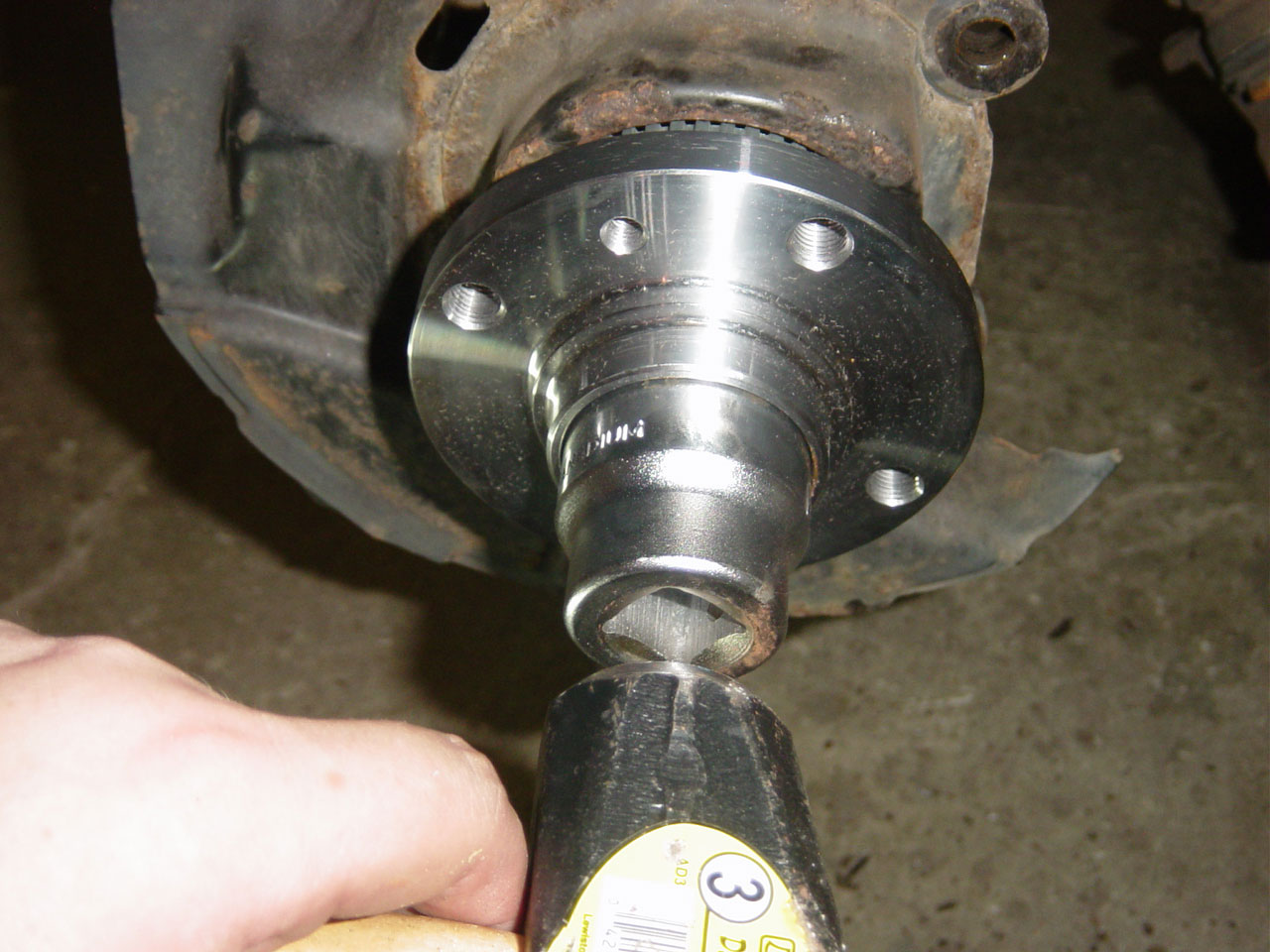
Everything else is reverse of removal, remember to torque the nut to 210 ft/lb (do not use impact wrench as it can shatter the plastic inside the hub), and to push in the lock tab on the nut when torqued. Again, the shaft is rigid that the nut is screwed on to and therefore you can do final tightening while the car is in the air with everything off of it (disk/caliper/wheel).





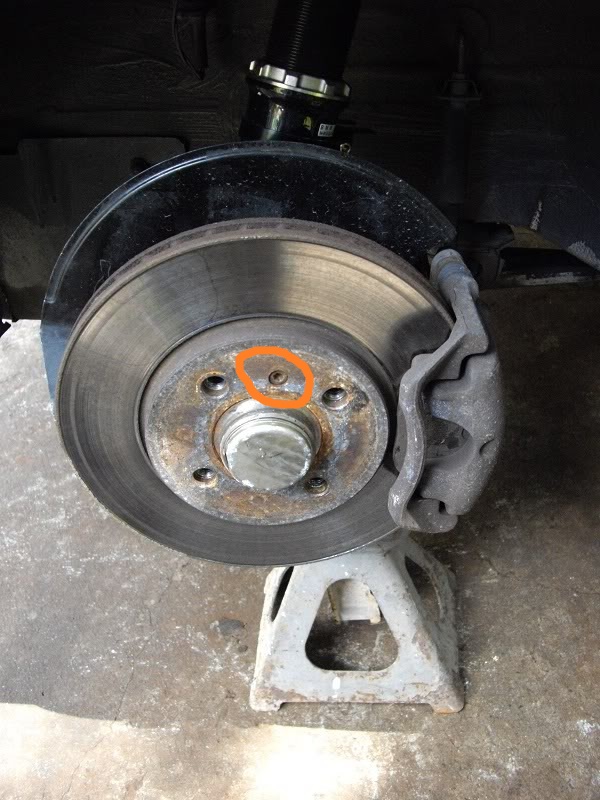

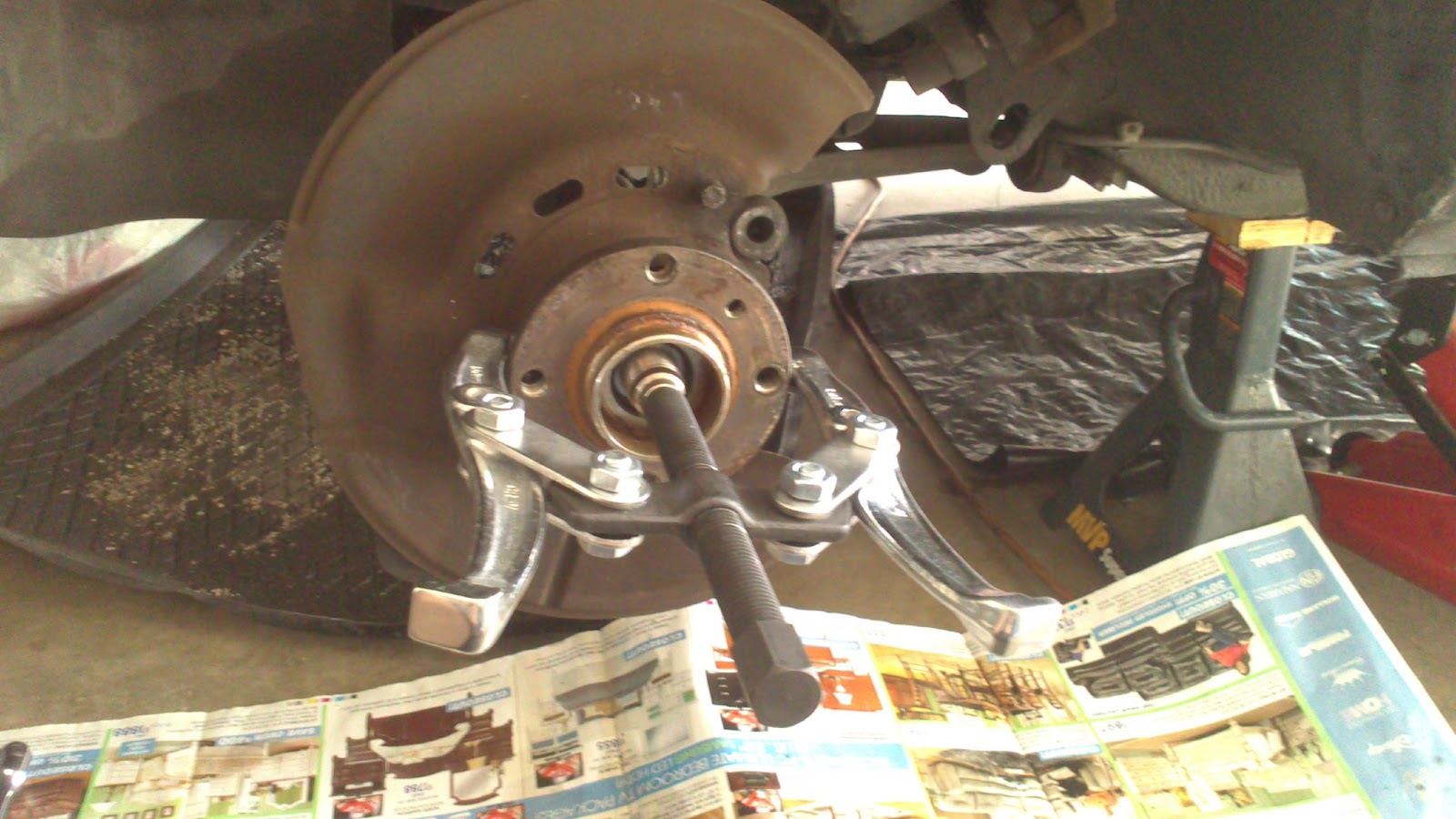
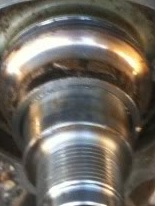
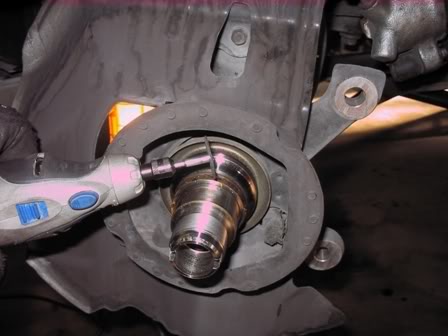

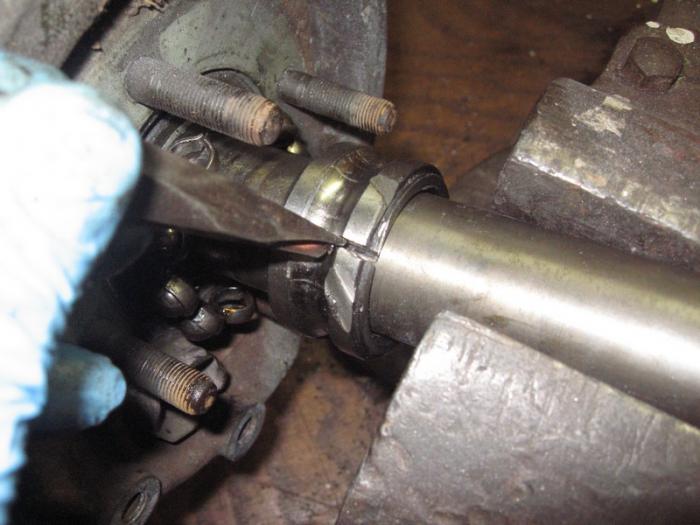





[…] read to pinch a suspension coil with your fingers while you spin the wheel from this useful link: How to diagnose a bad wheel bearing everytime and how to change front wheel bearings on an E30. | RT… Even with the coilovers, it definitely confirmed vibration coming from the right rear and none of […]
[…] Zoi is offline Quote Quick Reply post #40 of 40 Old Today, 01:53 PM sLAKERZ CITIUS::INFERIUS::FORTIUS Join Date: Sep 2013 Location: LAKERLAND Posts: 569 Thanks: 176 Thanked 72 Times in 59 Posts Adding my experience to this list/thread. Sounds like it's happened pretty frequently. Dealer confirmed. Right rear wheel bearing failure at 30k miles. Dealer covered it under warranty. No mention of my suspension modifications. Helpful Links: First Weird Symptom: Engine/Exhaust Drone with Stock Exhaust? How to diagnose a bad wheel bearing everytime and how to change front wheel bearings on an E30. | RT… […]